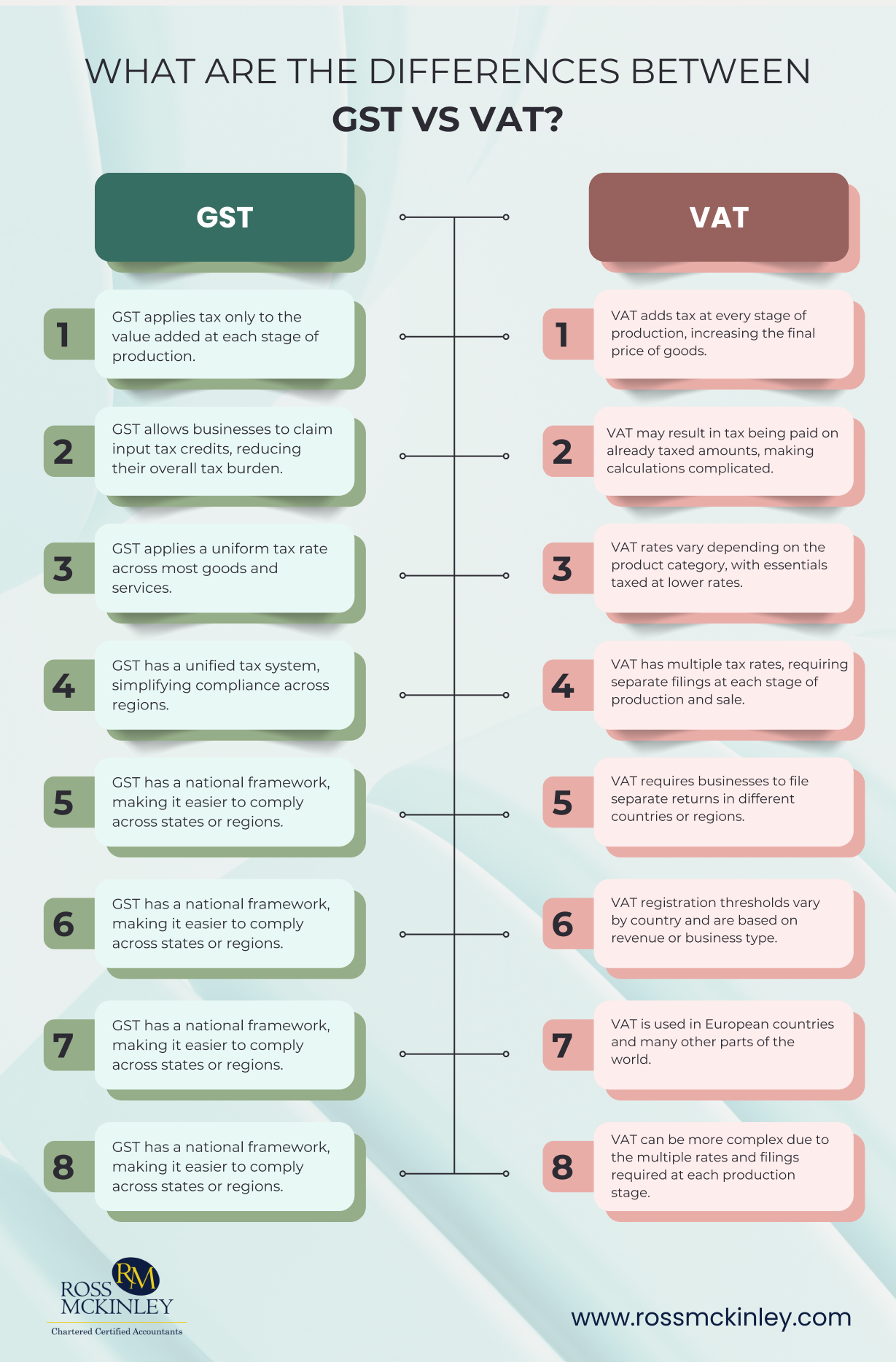Taxes shape how businesses operate worldwide. But when it comes to GST vs VAT, things can get confusing. Both are indirect taxes, but they work in different ways and impact businesses uniquely.
If your company sells across borders, understanding these taxes isn’t just useful, it’s a must. Some countries use VAT, while others rely on GST to keep tax collection smooth. Picking the right system ensures compliance and prevents costly mistakes.
The right tax choice can make or break your strategy when you’re expanding globally. To help you out we have elaborated on differences between VAT and GST in our latest blog.

Table of Contents
What Is VAT vs GST?
VAT stands for Value Added Tax, and you’ll see it on loads of goods and services. Some things are exempt, while others have a zero rate which means no tax for now, but that could change. For most products, though, VAT is part of the price you pay.
Businesses collect VAT from customers and then pass it on to the government. Since it’s an indirect tax, you’re not paying it straight to the authorities and it just adds to your bill.
GST stands for Goods and Services Tax, and countries like Australia, India, and Canada use it. It’s pretty much VAT’s cousin and it applies to goods and services just the same.
If your business needs to charge GST, you’ve got to register for it. Ignoring that can mean big penalties, so it’s not something to put off. If GST applies to you, sorting it early saves a lot of hassle later.
Differences Between VAT and GST
Both VAT and GST work in a similar way, so they mostly mean the same thing. Because of this, UK businesses don’t need to stress about the differences between VAT and GST.
However, things change if your company operates in countries where GST applies. Running a business in those regions means you need to understand GST rules.
Here are the differences between VAT vs GST:
| Differences Between VAT and GST |
| Major Differences in Calculation |
| Applicability on Different Items |
| Differences in Tax Structure |
| Compliance Frameworks are Different For Both |
| Threshold Limit for Registration |
Major Differences in Calculation
VAT adds tax at every stage of production, which increases the final price of goods. GST, on the other hand, follows a system where tax is applied only to the value added. Thus, GST reduces the buildup of taxes, making it more transparent.
With VAT, businesses might end up paying tax on already taxed amounts. However, GST allows businesses to claim input tax credits, lowering the overall tax burden. This makes GST a simpler option for companies handling multiple transactions.
For businesses operating internationally, understanding these tax methods helps in managing costs efficiently.
Applicability on Different Items
VAT rates vary based on product categories, with some items taxed at different levels. GST, however, aims to standardise tax rates across goods and services. This makes it easier to understand tax liabilities in GST-based countries.
Some essentials like food and medicine may have lower VAT rates, while luxury goods have higher rates. Meanwhile, GST often applies a uniform tax rate to most products, keeping things simple.
Countries using GST or VAT have different rules on exemptions and tax brackets. Businesses must check regulations in each market to ensure they apply the right tax.
Differences in Tax Structure
VAT has multiple tax rates and separate charges at each stage of production and sale. This makes tracking taxes complicated, especially for businesses with long supply chains. GST, however, is a unified tax, reducing confusion and paperwork.
With VAT, different countries may have their own rules and tax slabs, making compliance difficult. GST simplifies the process by having fewer categories and a clearer structure. As a result, it benefits businesses operating in multiple regions.
Since tax structures impact pricing and accounting, businesses must factor them into their financial planning. However, when you understand the GST vs VAT difference you can choose the best approach for your needs.
Compliance Frameworks Are Different for Both
VAT compliance requires businesses to handle separate tax filings at different stages. This adds extra work, especially for those dealing with complex supply chains. GST simplifies compliance by reducing multiple filings into one streamlined process.
Governments set VAT rates individually, so businesses must follow different rules in each country. GST, however, often has a national framework, making compliance easier across states or regions. This consistency helps businesses operate smoothly.
Companies need to follow the correct compliance framework to avoid unnecessary penalties.
Threshold Limit for Registration
VAT registration thresholds vary from country to country, depending on revenue and business type. Some businesses must register early, while others qualify for exemptions. GST usually has a fixed threshold, making it easier to determine when registration is needed.
In many cases, small businesses can delay VAT registration until they reach a set turnover limit. GST often requires businesses to register earlier, even for lower turnovers. This means businesses must stay aware of their tax obligations from the start.
Checking the threshold requirements in each country ensures companies stay compliant without unnecessary delays.
Our Tax Consultancy Service to Rescue
If you’re unsure about the thresholds for registration or how to handle compliance, Ross Mckinley is here to help. With our expert tax consultancy services, we can guide you through the process and make sure you’re always on track.
Whether you need advice on VAT or GST registration, our team has got you covered. Ross Mckinley offers tailored services that fit your business needs and help you save time and money.
Conclusion
Understanding the differences between GST vs VAT is essential for businesses dealing with international markets. While both are consumption taxes, they have their own rules, rates, and registration processes.
If you’re dealing with VAT or GST, keep track of registration thresholds to avoid surprises down the road. Staying on top of local tax laws helps you dodge penalties and keeps things running smoothly.
Most importantly don’t hesitate to get expert help when needed. Tax stuff can get tricky, and it’s always better to have someone in your corner making sure everything’s on point.

